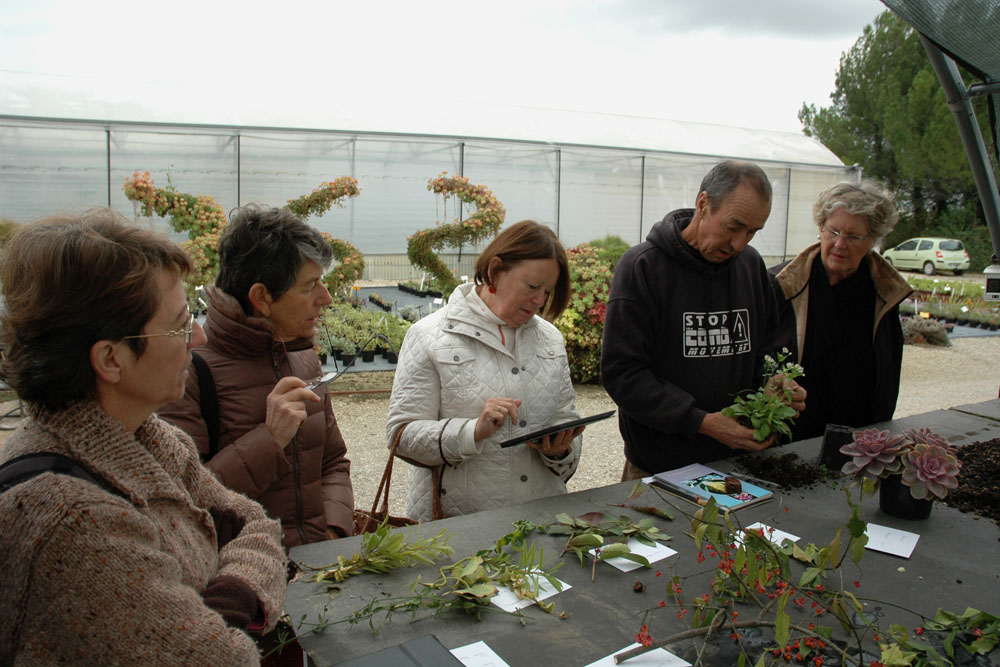November / novembre 2014 – A plant clinic
Une clinique des plantes à la pépinière l’Arc en Fleurs
Click on the images to enlarge them / Cliquez sur les images pour les agrandir
This excellent nursery and demonstration garden was developed by Jérôme Botella, our host for an event organized by David Bracey. It provided an opportunity for the identification of plants, weeds, pests and diseases and for the provision of advice and information on plant problems generally. A small group gathered from as far as Perpignan in the south-west to Bollène in the north-east and various points in between. It was a chilly day, the first so far this autumn.
David had brought along samples of plants.
Some were chlorotic, lackingchlorophyll because the high soil pH was blocking the uptake of iron, an essential element in chlorophyll production. Plant samples included Photinia, Grevillea and Pyracantha. This condition is common throughout the department of the Gard and can be cured using Sequestrine products. Sometimes the blocking of chlorophyll produces handsome results, like the reddening of succulents in winter e.g. Sedum compressum and Sedum album.
Other plants such as Viburnum had large scalloped bite marks around the leaf edge caused by vine weevil. Jérome said that this insect was impossible to eradicate. It could be controlled in pots for a while, but would return within two years, as it is so abundant in the region. Plant samples brought by members were identified. These included an Erigeron sp. and Pittosporum heterophyllum.
Some plants which grow abundantly in the wild have local names. Euonymus europaeus is known locally as ‘bonnet d’évêque’. Conyza canadensis, (horseweed) known locally as ‘vergerette du Canada’, came originally from Central and North America and is now widespread, if not invasive, in southern France.
There was also Rubia tinctorum, recognized by all present as a common weed but which in the 19th century had been a valuable plant, grown to produce a red dye called rouge garance used to dye trousers and képis for the French army.
Afterwards Jérôme took us on a guided tour of the nursery. It was well-maintained and organized and the plants were in excellent condition. There was an excellent selection of sedums, and a fascinating sculptural display of sedums covering four curving metal poles. Each pole had a leaky hose connected to a watering system, hidden by sphagnum moss in which the sedums were planted.
The wide variety of plants for sale kept us browsing for a good half hour and although it was a little late for autumn planting, a number of us succumbed to the temptation to buy. Then we walked around Jérôme’s demonstration garden admiring some well-established plants including very large stands of bamboo.
The Pépinière l’Arc en Fleurs at St Christol in Hérault is a good plant centre and well worth a detour if you’re in the area.
Text: Julia Petty
Photographs: Graham Petty
![]()





